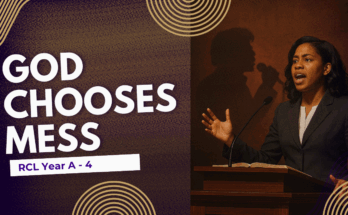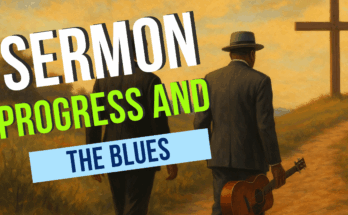As an Amazon Associate I earn from qualifying purchases.
The Eco Justice Ministries website has a post up entitled Three Layers of Environmental Preaching.
The author of the post is specifically talking about preaching on the Environment, but one can easily adapt the discussion to such issues as Racism, Classism, or other issues that might be a problem in your particular parish.
Issues Preaching
The first layer is called “issues preaching.” Here the preacher would directly address the environmental problems and factors and what we as a people of God who are interested in the welfare of God’s creation should and must do. If one is preaching on racism one could speak of what racism does and how it hurts the world and works against God’s intention. the emphasis here is on public policy.
In many cases issues preaching requires that the preacher be dependent on experts in the field for options. The preacher would then evaluate these options in light of the Gospel. In short, how does the Gospel affect our understanding of the issue and help us find a solution to it?
Generalized Themes
The next layer for preaching is the Generalized Themes layer. Here the preacher looks at themes rather than public policy. The preacher, as the resident theologian, is in a much more solid area when discussing general themes than when she or he is totally dependent on experts in the “issue” preaching described above.
Here the preacher can look at such themes as the interrelatedness of life or our duty to others. The preacher simply speaks on these themes which gives an undergirding to any public policy endeavor in the future.
The Pastoral layer
The next layer is called by the Author “the Deeper Layer,” but I call it the pastoral layer. Here the pastor will look at any issues that stem from the problem.
For example there are pastoral issues of dealing with people who are afraid for tomorrow and the “climate change.” Three are many who might give up in despair. Perhaps you have people who are dealing profoundly with racism and its immediate affects on the human psyche. The preacher is to address these by appealing to the Gospel.
Here we don’t ignore the pain and grief, but seek to channel it to help to bring God’s kingdom more fully into our lives.
Still Struggle with Scripture
As I discuss this article, I wish to add that we must always still struggle with the scripture to get a message. We cannot simply “use” a scripture that is not talking about what we wish it talked about, or simply “ignore” scriptures and go straight to discussing our topic.
Our preaching should be based in the scripture, but when we are looking at how to apply that scripture to modern day realities we can use this article as a tool to look at 3 possible types of questions to ask a scripture when we are exegeting and turning that exegesis into a sermon. These three layers are a very helpful way of conceiving how we will approach demonstrating the relevance of the ancient scripture that has been passed down to us.
How to use in Preparation
I think in using something like this in sermon construction we would first get our text. The first thing we would do is Step 2 of my exegesis method which id described in my book You Can Preach. So then we would have a good idea of what the text meant and who the text was directed to.
Next we would explicitly ask, are there any connections to our issue? The first set of questions have to do with public policy. Is there a connection between experts on our issue and the text? If there are not, then don’t force it.
The next set of questions would have to do with the “theme” layer. Does this text have anything to say bout brotherhood, community, or communal responsibility? I think we will find that many would.
Finally we go to the pastoral and ask questions like: Does the text say anything to help people who are in despair in general or in particular about our issue. Does the text say anything about directing our pain and despair to creatively confronting this issue or other issues? Now we are ready to go to step 3 and begin our creation of a theme.
Amazon and the Amazon logo are trademarks of Amazon.com, Inc, or its affiliates.





